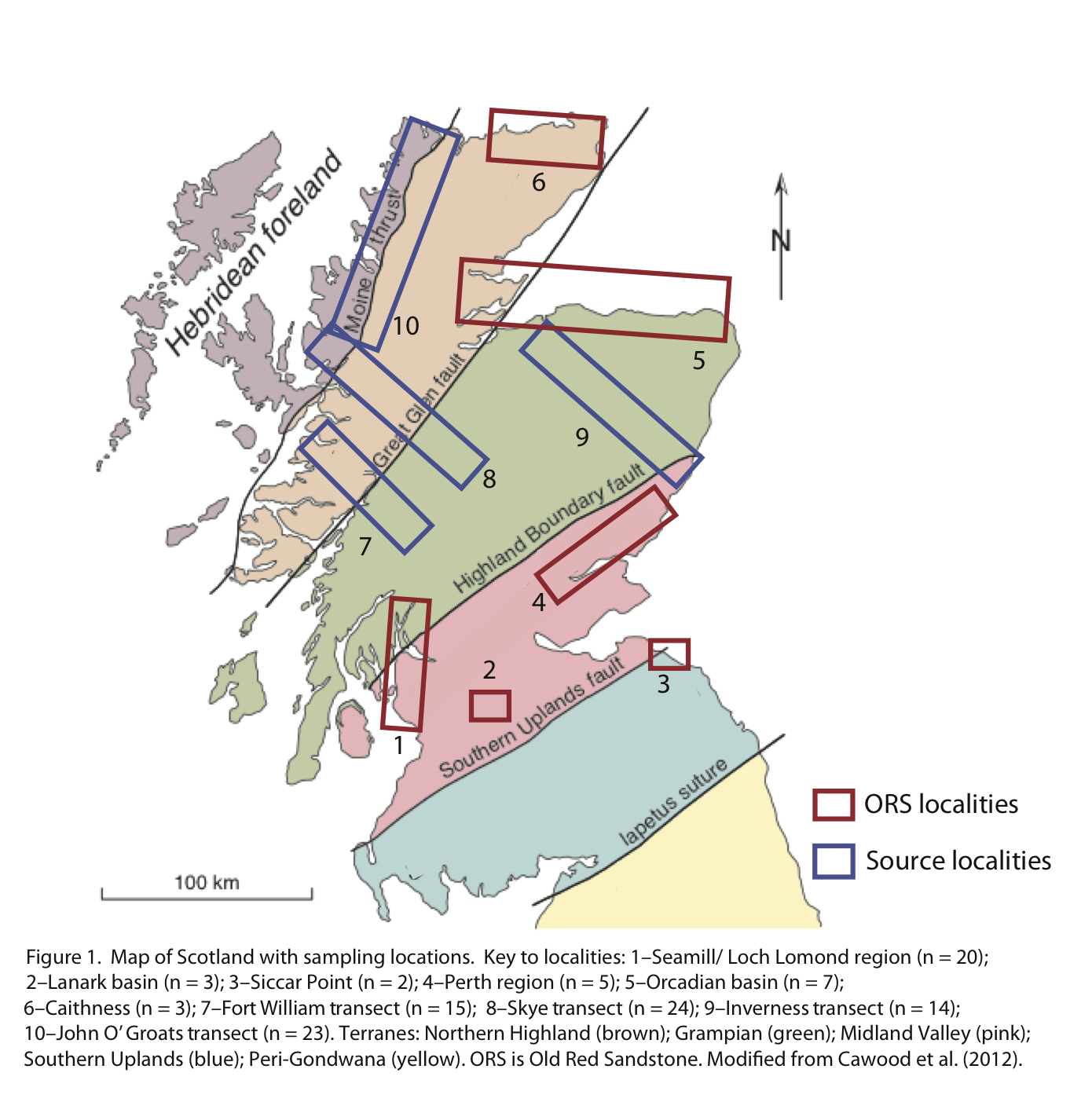Reports: ND854919-ND8: U/Pb-40Ar/39Ar Coupling Approach for the Reconstruction of Paleo-River Systems: A Case Study of the Siluro-Devonian Old Red Sandstone
Nicholas Christie-Blick, Columbia University
Research under way in the Silurian- to Devonian-aged Old Red Sandstone of Scotland and potential source terranes in the Caledonide orogen (mountain belt) of Scotland, Norway and Greenland aims to test the idea that the sediments may have been derived from far afield, and transported to their present outcrop locations via major river systems akin to the Indus and Ganges of the modern day Himalayan orogen. Our strategy involves a combination of detrital zircon U/Pb and white mica 40Ar/39Ar geochronology, and geochemical analysis of rutile, garnet and mica aimed at elucidating the P-T-t (pressure-temperature-time) evolution of the source terranes.
Research in the Devonian Hornelen basin, Norway was spearheaded by John Templeton, for the most part before the start of the present project (Ph.D., 2015). John also obtained 158 U/Pb detrital zircon ages from two Old Red Sandstone sites in the Midland Valley of Scotland, and 65 40Ar/39Ar white mica ages from four sites. Those results, which were presented at the Annual Meeting of the Geological Society of America in Denver, Colorado in September, 2016 (Anders et al., 2016), frame the project now under way.
Our preliminary data show that 1.65 Ga U/Pb zircon ages that dominate Hornelen basin samples are present also in samples of the Old Red Sandstone. White mica 40Ar/39Ar ages of 440-410 Ma in Hornelen basin closely match Old Red mica ages. Before concluding that the sediments were derived from a common source, it is necessary to eliminate other potential sources in Scotland.
After a slow start during the 2015-16 academic year, in which the Ph.D. student we had recruited to take over from John Templeton chose to focus on different research, progress was made in summer, 2016 with a new student brought in during the Spring, 2016 admissions cycle. Michael DeLuca completed his Masters degree in detrital geochronology at Texas A & M University in Spring, 2016, and took charge of sampling in Scotland over a period of one month from mid-July to mid-August, 2016.
A total of 140 samples were obtained from 116 localities – 40 sites in the Devonian outcrop of the Midland Valley of Scotland, Orcadian basin and Caithness (red boxes in Fig. 1); and 76 in four transects of potential sources (blue boxes in Fig. 1). All of the samples arrived at Lamont-Doherty Earth Observatory in late September, and are currently being processed for mineral separation. We hope to send the first batch of mica samples for irradiation as early as November.
Our objective in the Old Red samples is to establish a representative detrital signature in deposits that have been interpreted as large-scale bars of a major river system, and that paleocurrent data imply came from the north and northeast. Remaining samples are aimed at characterizing a series of petrogenetically distinct pre-Devonian terranes both transverse and parallel to structural strike to account for variable exhumation history and hence 40Ar/39Ar ages, and plutons that may have been emplaced synchronously with Old Red sedimentation.
A related issue in the Devonian basins concerns their tectonic origin, with both extensional and strike-slip mechanisms in play. In an attempt to resolve this issue for the Hornelen basin, for which we already have a great deal of geochronological data, during the same trip to Europe Mark Anders obtained samples from the faulted northern margin of the basin to evaluate the kinematics of deformation.












